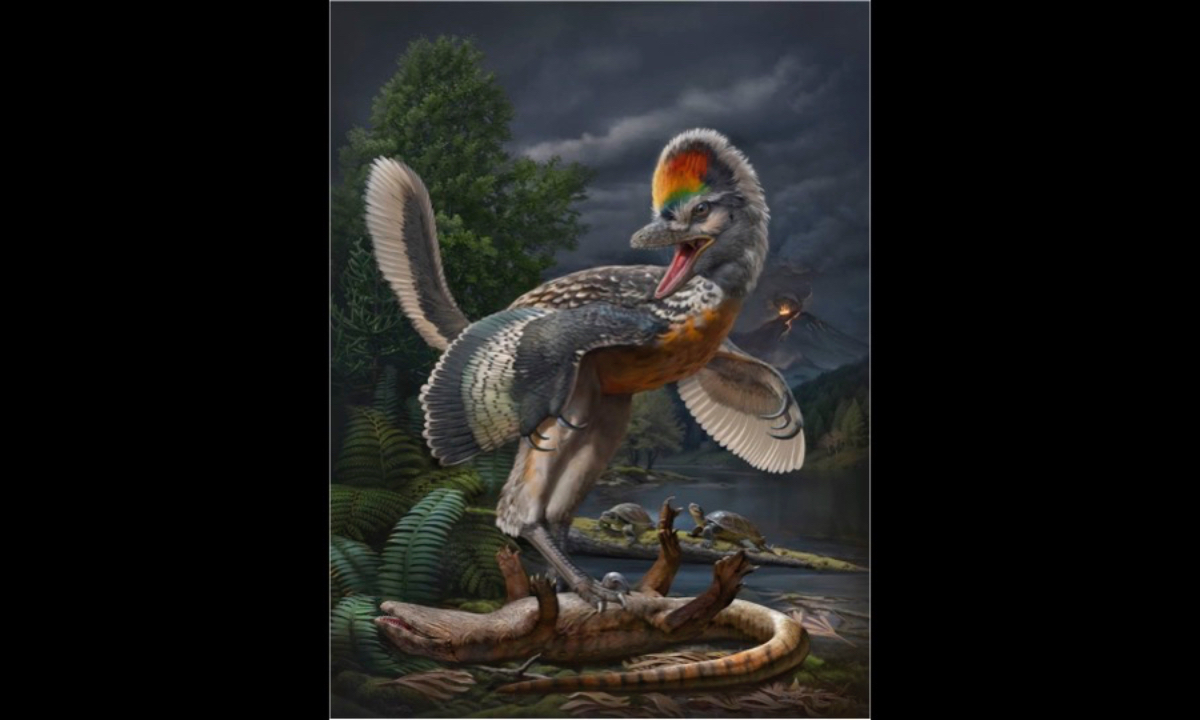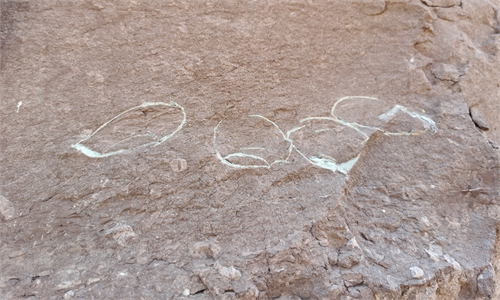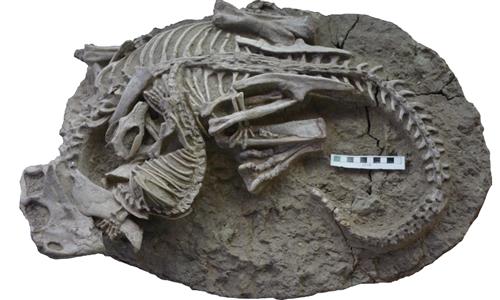Chinese scientists discover Avialae and terrestrial biota dating back to late Jurassic Period in E. China’s Fujian, filling in blanks of the origin of birds

Ecological restoration map of Fujianvenator prodigiosus and Zhenghe Fauna Photo: Courtesy of the Institute of Vertebrate Paleontology and Paleoanthropology of the Chinese Academy of Sciences
Chinese scientists announced on Wednesday their latest discoveries of Avialae dating back to the late Jurassic Period, which lived in East China’s Fujian Province, the southernmost location where this clade of dinosaur has ever been discovered, filling in some of the blanks of the time and space about the origin of birds.
With the discoveries of Avialae as well as a large number of other vertebrates, the researchers from the Institute of Vertebrate Paleontology and Paleoanthropology of the Chinese Academy of Sciences, and Fujian Institute of Geological Survey, established the terrestrial biota living 148 to 150 million years ago through studying the minerals and elements inside the rocks and the life forms in the rocks, according to a press release sent to the Global Times.
The origin and evolution of birds have long been the focus of discussions in evolutionary biology. Birds share a large number of synapomorphies with non-avian dinosaurs and they had already diverged from non-avian theropod dinosaurs by at least the late Jurassic epoch.
The academic community defines “Avialae” as “the most inclusive clade that includes all birds but not Deinonychus,” while “Aves” refers to modern birds and their close relatives.
Thus, the study of Avialae in the Jurassic Period plays a significant role in learning the origin, key morphological features and the evolution of biological characteristics of birds.
On October 23, 2022, Chinese researchers discovered a nearly complete dinosaur fossil in the late Jurassic strata in Zhenghe county in Fujian after which the researchers conducted excavation for over 200 days in the area and discovered a large number of well-preserved fossils of reptiles.
After a year of restoration and analysis, the researchers concluded the new discovery of the dinosaur fossil belonged to Avialae and named it Fujianvenator prodigiosus. It was the first time that a dinosaur fossil had been found in Fujian.
The scientists decided that the Fujianvenator prodigiosus lived in the Tithonian period of late Jurassic epoch and identified it the southernmost known Jurassic Avialae in terms of geographical location. The discovery of Fujianvenator prodigiosus helps fill in some of the blanks in the time and space of bird origins.
Research on the Fujianvenator prodigiosus shows the highly embedded evolutionary morphological features in the Avialae. Fujianvenator prodigiosus has a body structure similar to other Avialae and falls in size between dinosaurs and modern birds in terms of body size.
The researchers believe that Fujianvenator prodigiosus belonged to a clade of small theropod dinosaurs that were likely agile runners and may have lived near water. Such a lifestyle is distinct from the prevailing understanding in the scientific community regarding the ecological habits during the early stages of avian evolution.
Most scientists have traditionally considered arboreal (tree-dwelling) adaptations as the primary habitats for early Avialae, but the discoveries about Fujianvenator prodigiosus add to the ecological diversity of early Avialae.
Apart from Fujianvenator prodigiosus, the research team also found a large number of well-preserved fossils of reptiles, including aquatic and semi-aquatic chelonians and Choristodera.
Based on such high abundance and diversity of fossils, as well as the accurate chronological framework, researchers have named the terrestrial biota the “Zhenghe Fauna,” the fauna that contained Avialae in late Jurassic Period and that was located in the southernmost location on Earth known to date.
The thesis of the discoveries and researches coauthored by first author Wang Min, researcher from the Institute of Vertebrate Paleontology and Paleoanthropology of the Chinese Academy of Sciences, and first author Xu Liming, researcher from Fujian Institute of Geological Survey, was published in science journal Nature on Wednesday.
Global Times




